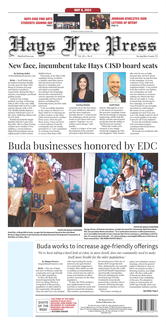After 5,800-plus days, spanning just over 140,000 hours and roughly 8.4 million minutes, the U.S. Women’s soccer team on Sunday reclaimed the title as World Cup champions
They did so without seemingly breaking a sweat.
In what was a truly dominating performance, the U.S. put the pedal to the metal and crushed Japan 5-2 in Sunday’s World Cup Final in Vancouver.
But perhaps we shouldn’t be surprised that Team USA muscled and scrapped its way to a World Cup title.
After all, they, unlike any other team in this year’s tournament, had the most to prove.
Ever since the 1999 team last hoisted a World Cup title, subsequent Team USA squads have had to live in their shadow.
While many of the teams were successful, they couldn’t quite live up to the expectations set in front of them. None of them could replicate the success.
It was perhaps due to cohesion that many of those squads couldn’t replicate from that 1999. Sure, they had a variety of talented players. But it just never seemed they could put it all together, all in one package to lead to success.
The closest model occurred in 2011, when the team only succumbed to Japan in the World Cup final that year.
The teamwork and camaraderie Mia Hamm, Brandi Chastain, Brianna Scurry and others showed in that summer of 1999 was something to behold.
And for a short while this summer, it seemed the 2015 team was on the verge of falling into the same trap.
A shaky 2-0-1 mark in the opening stage led to some doubt that the U.S. could make a deep tournament run. Despite the team holding Sweden and a gutsy Nigerian squad scoreless.
But bulletin board material provided by Colombia in the first round in the knockout stage seemed to provide the right motivation.
An impressive 2-0 win catapulted the U.S. to greater heights. Before you knew it, Team USA was on a roll, shutting out China and Germany en route to the title match.
It was the play of an incredibly talented and savvy defense that made all of the difference. Anchored by goalkeeper Hope Solo, Team USA’s defense played with an aggression that would have made Mean Joe Green and the Pittsburgh “Steel Curtain” blush.
For over 500 minutes, the U.S. team kept opponents at wits’ end. No matter the tactic, no matter the strategy, nothing got past that back line.
From there, the U.S. turned to a revamped offense that found its confidence as it kept playing. From a physical and frenetic midfield, to a fast and cunning front line, the offense for the U.S. pushed forward, dictating the pace of play.
Their ability to find the open space was just as vital as their ability to combine in the open field. Smooth passing and adequate communication equated to an offense that created smart, yet daring chances for goals.
All of it culminated Sunday, when Carli Lloyd needed less than half an hour to obliterate the Japanese defense and notch a hat-trick.
It’s that dominance, cohesion and tenacity that allowed the 2015 squad to not only match the 1999 team’s success, but to surpass it entirely.
The support generated for them speaks for itself. Over 26 million people tuned in to watch the women put on their clinic in the final.
But what the team accomplished will go far beyond simply winning a trophy.
While their predecessors were pioneers for women’s soccer, the 2015 team could be the catalyst that solidifies its place in the sports consciousness for some time.
After all, the team has now claimed its third World Cup in the last 20-plus years. Three more than their male counterparts have accomplished.







